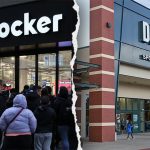Cargo volume at the nations major retail container ports is now expected to decline 6.5% in 2008 compared with 2007 as merchants carefully manage inventories in response to the nations slow economy, according to the monthly Port Tracker report released today by the National Retail Federation and Global Insight.
Volume is projected to total 15.43 million Twenty-Foot-Equivalent Units for the year, compared with 16.5 million TEU in 2007. The estimate is down from 15.5 million projected in September, which would have been a 6% decline from 2007. The total would be the lowest since 2005, when 15.4 million TEU moved through the ports. One TEU is one 20-foot container or its equivalent.
“This has clearly been a difficult year and we still have a challenging holiday season ahead of us,” NRF VP for supply chain and customs policy Jonathan Gold said. “Retailers are being careful to import only as much merchandise as they think they can sell.”
U.S. ports surveyed handled 1.37 million TEU in August, the most recent month for which actual numbers are available. The number was up 4% from July but down 5.9% from August 2007.
September was estimated at 1.34 million TEU, down 9.2% from a year ago, and October is forecast at 1.38 million TEU, down 4.3%. October should be the peak month of the year, though it will fall short of the 1.48 million TEU peak for 2007 set last September. November is forecast at 1.28 million TEU, down 6.9%, and December at 1.25 million TEU, down 2.1%. January 2009 is forecast at 1.21 million TEU, down 1.6% from January 2008, and February 2009 is forecast at 1.15 million TEU, down 5.9%.
Meanwhile, Port Trackers congestion rating for the Ports of Los Angeles and Long Beach continues at medium because of new regulations that required trucking companies seeking to do business there to obtain a special concession license beginning Oct. 1.
“Uncertainties remaining for implementation of the Clean Trucks Program at the Ports of Los Angeles and Long Beach are causing concerns,” Global Insight Economist Paul Bingham said. “Weak import demand has relieved pressure on port capacity but doubts remain about whether enough trucks will be available.”
The remainder of the U.S. ports covered by Port Tracker-Oakland, Seattle and Tacoma on the West Coast; New York/New Jersey, Hampton Roads, Charleston and Savannah on the East Coast, and Houston on the Gulf Coast-are rated “low” for congestion, the same as last month.












